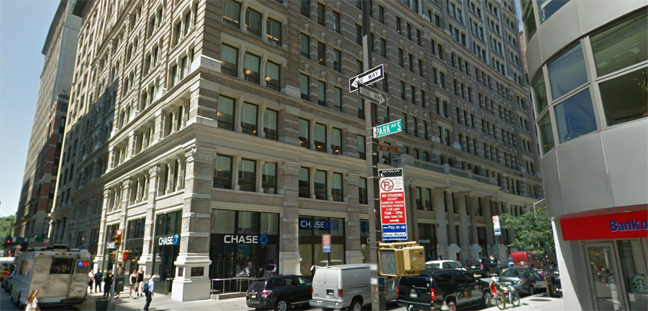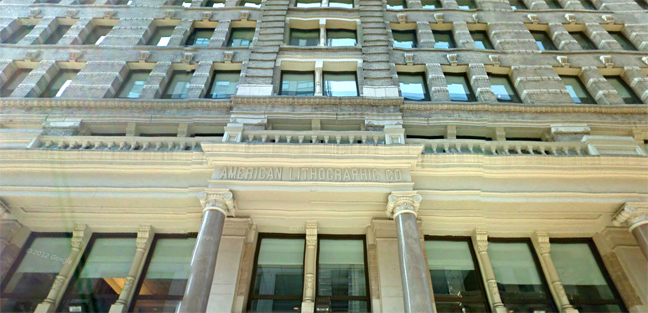|
|
|
|
#1
|
||||
|
||||
|
if i understand corectly , all the T206 cards where printed at american litho and the same place with the same press printer ??? And after that where shipped to the factory write on the bottom of the card ???
|
|
#2
|
|||
|
|||
|
Yes, that's it.
The cards were distributed in packages; packages that went from the factories into the commerce stream, eventually to a point where they were sold to consumers. The factories didn't "make" the tobacco. The factory didn't "make" or print the cards. The factories did manufacture (or maybe process for Polar Bear) a tobacco product, package it (sometimes with various collector cards), then they would distribute (sell) the product. American Lithograph Company printed those cards. Part of what we collectors miss is the context of what that printing was. Before printing, visual media was hand produced. Gutenburg Bible time, ie the beginnings of movable type, was also when an artistic rendering could be cut into a block of wood. These might be small crude maps, portraits of Saints, Kings, Popes, Emperors... Before this time, the only way a visual image could be captured was by an artist rendering a painting or drawing. The woodcut blocks had a short printing life. Copper plates were used at a later point in time. They would last longer. But again, the product was expensive and beyond the means of most people. Most of us have heard of Currier and Ives prints. The significance is lost upon most folks. These were lithography works, great images, color and detail... and they were in the price range of most folks. For the first time ever, everyday folk could afford a visual rendering (art). Today, everything we see has visual art on it. Everywhere... but that is a fairly new phenomenon. 20 years ago I ordered some billboards, and chose 1 color, blue, to save on printing costs. More colors were more money... Today, the manufacturing process for the billboard sheets is such that full color is the same price as one color... Not true yet for newspapers, though. But I digress. These little trade cards that we look at as antiquated were, in their day, a marvel to behold. They represented a confluence of technology and art that resulted in great visual art in an affordable form. Last edited by FrankWakefield; 05-18-2012 at 08:41 AM. |
|
#3
|
|||
|
|||
|
Could this be what the lithography machines looked like?

|
|
#4
|
|||
|
|||
|
For those who are interested, here are some modern day images of the ALC building in NYC (taken from Google Maps):
  
__________________
T206 518/518 |
|
#5
|
|||
|
|||
|
Yes, although I think those are somewhat newer.
Steve B |
|
#6
|
|||
|
|||
|
Great input everyone.....
 This is facinating to me.....makes me almost want to go to the lithographic building......that's where more than likely my "freaks" evolved.....just awesome.....thanks for everyones research....i'm lazy  peace v |
|
#7
|
||||
|
||||
|
Similar to these Steve?
 
__________________
T206 gallery |
|
#8
|
|||
|
|||
|
Imagine how many employees it took to operate those machines, print, and cut millions of T206 cards!
I wonder how many cards the employees took home. They were very popular with kids and I'm sure many of them had eager relatives asking for cards. When the order from upper management came to destroy all the Wagner cards, I'm sure several pocketed some. |
|
#9
|
|||
|
|||
|
Those presses are closer, and very early for printing from plates.
The ones printing from stones were more like this one from http://www.fotolibra.com/gallery/499...der-jobbing-m/  Making them wouldn't have taken long. Figuring an unlikely but for math convenient 10x10 sheet, 100cards x 1000 sheets an hour =100,000 cards/hour. x10 hours of production /day = 1,000,000 cards/day. Figure 10 colors counting the back, so they could easily turn out 100,000 a day, probably more if the sheet was bigger as was likely, or if they used more than one press. Add in a couple days for cutting, and a million cards probably took around two weeks. Steve B |
|
#10
|
|||
|
|||
|
Here is another cool site. I believe some of these photos may show factory 42
http://endangereddurham.blogspot.com...e-factory.html |
 |
|
|
 Similar Threads
Similar Threads
|
||||
| Thread | Thread Starter | Forum | Replies | Last Post |
| T206 For Sale-T205 For sale | vic | Tobacco (T) cards, except T206 B/S/T | 5 | 09-04-2011 08:12 PM |
| T206 for sale | vic | Tobacco (T) cards, except T206 B/S/T | 10 | 09-04-2011 08:11 PM |
| T206 SGC Graded Cards For Sale... | iggyman | Tobacco (T) cards, except T206 B/S/T | 7 | 08-16-2010 05:57 PM |
| T206's for sale | WabitTwax | Tobacco (T) cards, except T206 B/S/T | 6 | 10-26-2009 10:56 AM |
| My T206 Plank theory....and, what's your guess ? | Archive | Net54baseball Vintage (WWII & Older) Baseball Cards & New Member Introductions | 112 | 02-08-2007 12:43 PM |